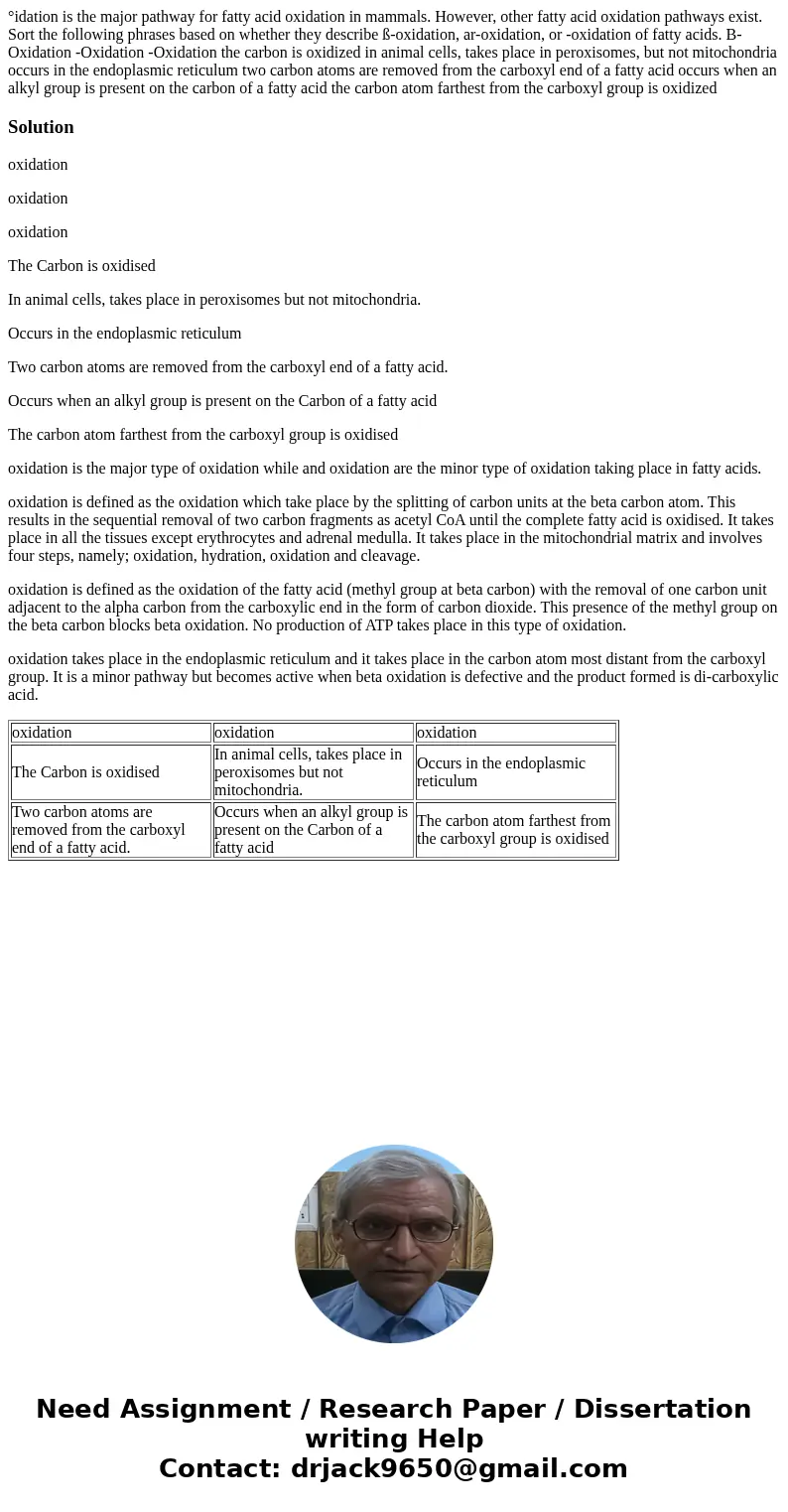idation is the major pathway for fatty acid oxidation in mam
Solution
oxidation
oxidation
oxidation
The Carbon is oxidised
In animal cells, takes place in peroxisomes but not mitochondria.
Occurs in the endoplasmic reticulum
Two carbon atoms are removed from the carboxyl end of a fatty acid.
Occurs when an alkyl group is present on the Carbon of a fatty acid
The carbon atom farthest from the carboxyl group is oxidised
oxidation is the major type of oxidation while and oxidation are the minor type of oxidation taking place in fatty acids.
oxidation is defined as the oxidation which take place by the splitting of carbon units at the beta carbon atom. This results in the sequential removal of two carbon fragments as acetyl CoA until the complete fatty acid is oxidised. It takes place in all the tissues except erythrocytes and adrenal medulla. It takes place in the mitochondrial matrix and involves four steps, namely; oxidation, hydration, oxidation and cleavage.
oxidation is defined as the oxidation of the fatty acid (methyl group at beta carbon) with the removal of one carbon unit adjacent to the alpha carbon from the carboxylic end in the form of carbon dioxide. This presence of the methyl group on the beta carbon blocks beta oxidation. No production of ATP takes place in this type of oxidation.
oxidation takes place in the endoplasmic reticulum and it takes place in the carbon atom most distant from the carboxyl group. It is a minor pathway but becomes active when beta oxidation is defective and the product formed is di-carboxylic acid.
| oxidation | oxidation | oxidation |
| The Carbon is oxidised | In animal cells, takes place in peroxisomes but not mitochondria. | Occurs in the endoplasmic reticulum |
| Two carbon atoms are removed from the carboxyl end of a fatty acid. | Occurs when an alkyl group is present on the Carbon of a fatty acid | The carbon atom farthest from the carboxyl group is oxidised |

 Homework Sourse
Homework Sourse